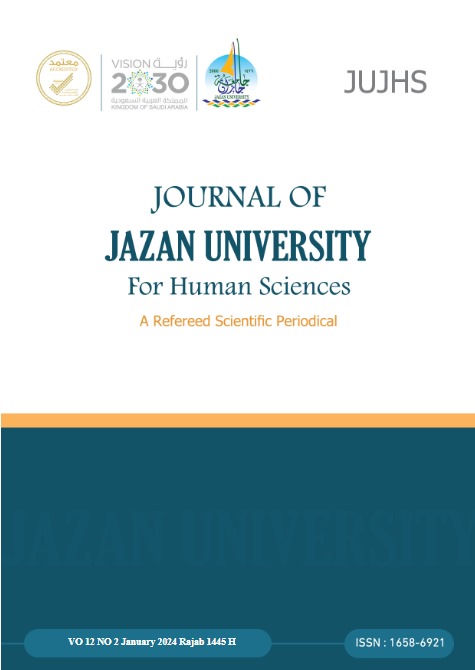A Phono-morphological Analysis of ‘Affrication’ and ‘Frication’ of the Feminine Suffix [-ki] in Saudi Dialects
Keywords:
Allostructions, Affrication, Frication, Kaškašah, KaskasahAbstract
Fricatives and affricates are two manners of articulation describing the process of producing consonants. A fricative is produced when two articulators are placed in close proximity, by creating a narrow channel with the mouth through which air is forced. An affricate is the consonant that is initiated as a stop and ends as a fricative. ‘Affrication’ and ‘Frication’ are phonological processes used to produce sounds in multiple languages. In modern and classical Arabic, ‘frication’ realizes the second feminine singular object/possessive pronouns’ (2FSPs) suffix [-ki] as the fricatives [-s] or [-š], while ‘affrication’ realizes it as an affricate, such as [-č], [-tš] or [-ts]. These processes are associated with Arabian peninsula dialects and have existed since the pre-Islamic era. They are present in Arabic terms; i.e. Kaškašah ‘كشكشة’, Taštašah ‘تشتشة’ , kačkača ‘كچكچة’, Kaskasah ‘كسكسة’ and Tastasah ‘تستسة’. This study is unique in that it aims to examine the interface between the many levels of the form-meaning representation of 2FSPs in distinct Saudi Dialects (SDs) by employing Booji’s (2009, 2010, 2016, 2019a) Construction Morphology. 2FSP is considered a linguistic signifier with a systematic form-meaning relationship and so this research also explores the relationship between the form of the allostructions (i.e. morpho-phonological variants) of 2FSP (i.e. [-s], [-ts], [-š], [-tš] and [-č]), and the conceptual meaning (i.e. semantics and pragmatics) in SDs. The study found that the phono-morphological construction demonstrates that 2FSP allostructions indicate the socio-cultural background of speakers (i.e. their dialects and the Saudi region where they belong). These allostructions are instantiations of constructional schemas which function as both a model for existing forms and a guide for forming new forms. These schemas reduce the degree of arbitrariness in the form-meaning relationship of the 2FSP allostructions. This study contributes to advancing the understanding and interpretation of [-ki] dialectal variations while highlighting key implications for phono-morphological construction in SDs.
Downloads
Downloads
-
PDF
35
36
Published
Issue
Section
License
Copyright (c) 2024 CC Attribution 4.0

This work is licensed under a Creative Commons Attribution 4.0 International License.





